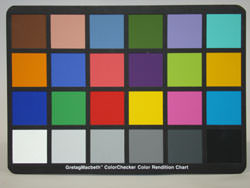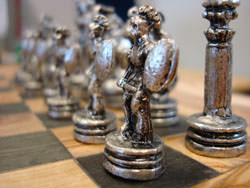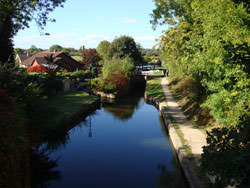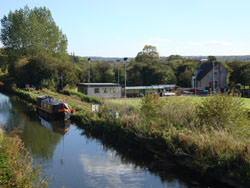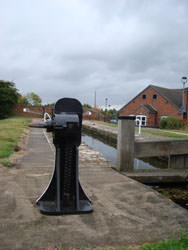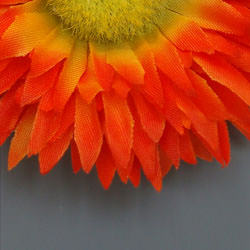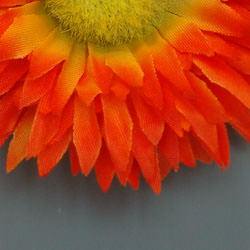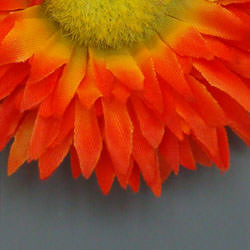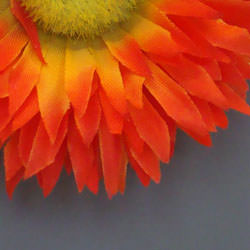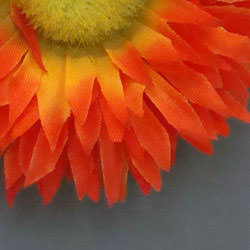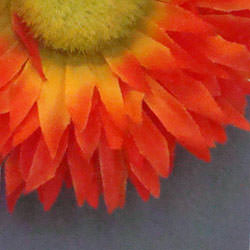 Do you want more resolution than an electron microscope, image stabilisation and a lens given the seal of approval by Carl Zeiss? Then take a look at this little beauty from Sony, all resplendent in shiny silver with shiny chrome sides and extra shiny bits on top.
Do you want more resolution than an electron microscope, image stabilisation and a lens given the seal of approval by Carl Zeiss? Then take a look at this little beauty from Sony, all resplendent in shiny silver with shiny chrome sides and extra shiny bits on top.
Sony Cyber-shot W200 Specifications
-
Image Size: 4000×3000 pixels
-
Lens: 35-105mm f/2.8-5.5 (3x zoom)
-
Focus: Nine Area Multi-Point AF/Centre
-
Macro mode: 2cm
-
Exposure: Program AE/Scene modes
-
Metering: Multi-Pattern
-
Monitor: 2.5in. TFT LCD
-
Movie Mode: Yes
-
Storage: 31Mb Internal, Memory Stick DUO, DUO Pro
-
Batteries: Li-ion
-
AC Adaptor: Optional
-
Video Output: Yes – HD 1080
-
Size/Weight: 91x58x27mm – 142g
-
Transfer: USB 2.0
There’s a horde of choices if you want a compact with 12Mp resolution. The Panasonic DMC-FX100 has 12Mp and a wide angle 28mm lens, but will cost you £60 more, Casio have the EXILIM EX-Z1200 which has a similar spec and is a mere £14 more expensive, or you could go mad with the titanium-clad Canon Digital IXUS 960IS which has 12Mp and a 35mm lens with 4x zoom, for another £140.
 Sony Cyber-shot DSC-W200 Modes and features
Sony Cyber-shot DSC-W200 Modes and features
Other than the power and fire buttons on the top of the camera, all the other control functions and features are squashed into the space next to the LCD screen on the back. The tiny mode dial houses Program, Manual, Auto, ISO Auto, Soft Portrait, Twilight Portrait, Night, Landscape, Scene mode and Video modes. There has been a trend to pull the most common modes out of the Scene menu onto the dial, and leave the more esoteric options for the user to rummage for. Same again here, except that a trip to the Scene selection menu is rather like winning a mystery holiday only to find yourself in Skegness. There are options for fireworks, snow, beach and extra high sensitivity. And that’s your lot. The extra high sensitivity mode by the way reduces the resolution to a paltry 3Mp which rather negates the point of buying the camera in the first place. The other ISO mode on the dial – which brings up the title, Extra Sensitivity, isn’t that at all. It’s an Auto ISO function that selects from 100-3200 depending on the light available.
What’s interesting is that there’s even a Manual mode there at all. Obviously no-one will be taking a light meter along for the ride with the W200 so good news then that it constantly meters the scene and provides a guide to whether the picture is over or under exposed. You can therefore change the shutter speed or the aperture, though there’s only f/2.8, f5.6 and f/8 to choose from. When the modest 3x optical zoom is used, these then scale up to f/5.5, f/11 and f/16. Now, having a widest aperture of f/5.5 at the end of the 3x zoom makes the lens pretty slow in terms of light gathering. One nice touch is that a little live histogram can be displayed in the corner of the LCD, showing a graphical alternative to the EV numbers saying whether you’ve got the exposure right or wrong.
The scene and ISO modes all allow a little user control over the proceedings. Normally, just whether face detection, bracketing, red-eye reduction, Steady-Shot and exposure compensation are employed. The Manual and Program modes expand things with a choice of metering systems – set once and leave alone – and also colour modes and focus point selection. Here there’s a choice of using the central spot to focus with, a central area, or a multi-point focus system. You can’t select individual focus points with this though.
Of all the features shoved in here, the face detection which adds additional processing to ensure mugshots are clear, and the SteadyShot image stabilisation are worthy of note. The latter item is optical, detects movement and compensates within the lens itself. The dynamic range optimisation feature simply evens out the histogram so shadows are lightened up.
Finally, and unusually for a compact these days, there’s a tiny optical viewfinder. To be honest, this is so small it’s like squinting the wrong way down a kids telescope.
 Sony Cyber-shot DSC-W200 Build quality and handling
Sony Cyber-shot DSC-W200 Build quality and handling
Build quality is high, with a brushed metal finish front, plastic chrome bits, and a sprung battery/memory card chamber. In case you were wondering, it takes Sony’s proprietary MemoryStick Duo and PRO Duo cards, which are now so small they’re like an SD card anyway. Sony could do everyone a favour by just using SD cards on these cameras.
The lens is solid, and unfurls gracefully, while the buttons on the back are all raised enough to use without finger-fumbling trauma. Even the mode dial and joypad controller are relatively easy to use, despite the fact that everything is packed in tighter than Japanese commuters in the rush hour.
The LCD screen looks nice enough, until you realise that subtle shades of single colours all merge into one. The red petals of the flower on the noise test images look like a single block of red. The menu selections are clear and easy to use however, once selections have been made, the text for them is overlaid on the screen and this looks awful. The settings are barely readable – whether that’s the resolution of the screen or the anti-aliased font is hard to say. It looks pants though. Which brings me to the styling of the camera. Despite being solid and well made, with a quality finish, the design is lacklustre from the front and rather ugly from the back.
Sony Cyber-shot DSC-W200 flash options
Well, there’s Auto, Forced On, Forced Off and Slow Synch on the main options and Red-eye reduction on or off in another part of the menu. You can also apply flash exposure compensation as well.
 Sony Cyber-shot DSC-W200 Performance
Sony Cyber-shot DSC-W200 Performance
The lens whips out in less than three seconds which is good for a compact with a protruding lens. The multi-point focussing system gets confused easily, and isn’t recommended for macro work. In fact none of the focussing systems are particularly good when using the telephoto end of the lens and it will wander then give up, even on areas where there is obvious detail.
The macro mode is supposed to work at up to 2cm as well, but this seems wishful thinking more than anything else. In practice it was impossible to get it to focus on anything closer than 4cm. That’s still pretty good, but it isn’t top of the class.
All of which is little preparation for what happened in the burst mode test. Bearing in mind that this is a 12Mp camera, expectations weren’t high as rival cameras haven’t exactly sprinted over the finishing line in this test. The W200 on the other hand captured a staggering 21 images, all at 12Mp, in the 10sec test. That’s actually better than the Pentax K100D Super digital SLR that was reviewed last week, and the images are double the resolution.
Accessing menus is easy enough, and selecting a new parameter is a matter of moving the selection with the joypad. However, confirming the selection is done by… nothing. Strangely, there’s no need to press the central button or anything else for confirmation, just press the Menu button to clear the screen. This is contrary to most other cameras, and while it saves on a button press, it’s initially disorientating as what you are doing would cancel the selection if using other cameras. The other point is that essential items like exposure compensation, which have a dedicated button on other cameras, have to accessed through the menu here. In operation, when combined with the live histogram, it is easy to use and give instant feedback, but it’s just slow to get at.
When it comes to image quality, the 12Mp resolution almost guarantees plenty of detail and that’s certainly the case. Fringing on white areas is a constant problem, whether it’s something in the landscape or a white collar on clothing. The overall quality is okay, test shots show areas lacking sharpness and detail.
The colour chart shows a predictable case of bright blues and lively red, so that blue skies and skin tones will all look perky, though the skin shade on the chart is a little ruddy. Greens tend to be more subdued and natural looking.
|
|
Sony Cyber-shot DSC-W200 Noise tests
The detail in the ISO100 test is very fine as you might imagine with a 12Mp image, though it’s not particularly sharp towards the edges. There’s a little variation in the grey card, but it’s very hard to detect and this is a very good result from such a high resolution compact. At ISO200 there is some purple appearing in the shadows of the grey card and in the card itself, but still nothing to worry about. At ISO400 there’s noticeable purple and green blotches in the grey and black card areas. The image is also slightly softer. At ISO800 the noise is now hard-edged so is apparent in the solid colour areas. It’s not bad though, and there is still detail in the red petals though the central yellow area is now quite soft. Moving up to ISO1600 this is where tings usually start to go wrong. The solid colour areas are now quite noisy and the lower petals have lost detail. Noise has affected the image throughout making it softer, the colour paler and lacking in detail, however, this is still better than many compacts, and especially considering it’s a 12Mp camera. Noise control kicks in for ISO3200, which still means that the grey card is noisy, but at least it’s all one colour. However, the flower itself is now more like an artist’s impression than a photograph, lacking any real detail.
Sony Cyber-shot DSC-W200 Verdict
The LCD screen is a let-down, there’s no doubt about that, and there are other issues like the lacklustre focussing ability, the macro that doesn’t do what it says on the tin, and the stuffing of lots of features into the menu system.
There are good features like SteadyShot optical image stabilisation and face detection that automatically kicks in when portrait mode is used. But again, there are far too few scene modes for a compact, and aside from the whopping 12Mp resolution, the lens functionality is modest at best with no wide angle setting and just a slow aperture, 3x zoom. Noise control is very good, with a usable ISO1600 mode, and things only getting silly at ISO3200, but design and control layout are bland and cramped.
The W200 is okay, it does a job with the high resolution, the ISO performance is better than any other 12Mp compact and the burst rate is tremendous, but everything else drags it back down into the pack. Like the image stabilisation, this is a SteadyShot purchase, but rather an uninspiring one.
 Sony Cyber-shot DSC-W200 Plus points:
Sony Cyber-shot DSC-W200 Plus points:![]() Massive 12Mp resolution
Massive 12Mp resolution![]() Staggering burst mode
Staggering burst mode![]() Up to ISO6400
Up to ISO6400![]() Face Detection
Face Detection![]() Optical stabilisation
Optical stabilisation![]() Very good noise control
Very good noise control
Sony Cyber-shot DSC-W200 Minus points:![]() Very limited lens
Very limited lens![]() Poor LCD screen
Poor LCD screen![]() Focussing not great
Focussing not great![]() Too much in menus
Too much in menus![]() Buttons cramped
Buttons cramped![]() Dull design
Dull design![]() Limited scene modes
Limited scene modes![]() ISO3200 like a painting
ISO3200 like a painting
FEATURES![]()
HANDLING![]()
PERFORMANCE![]()
OVERALL![]()
The Sony Cyber-shot DSC-W200 costs £225 and is available from the ePHOTOzine shop here.


